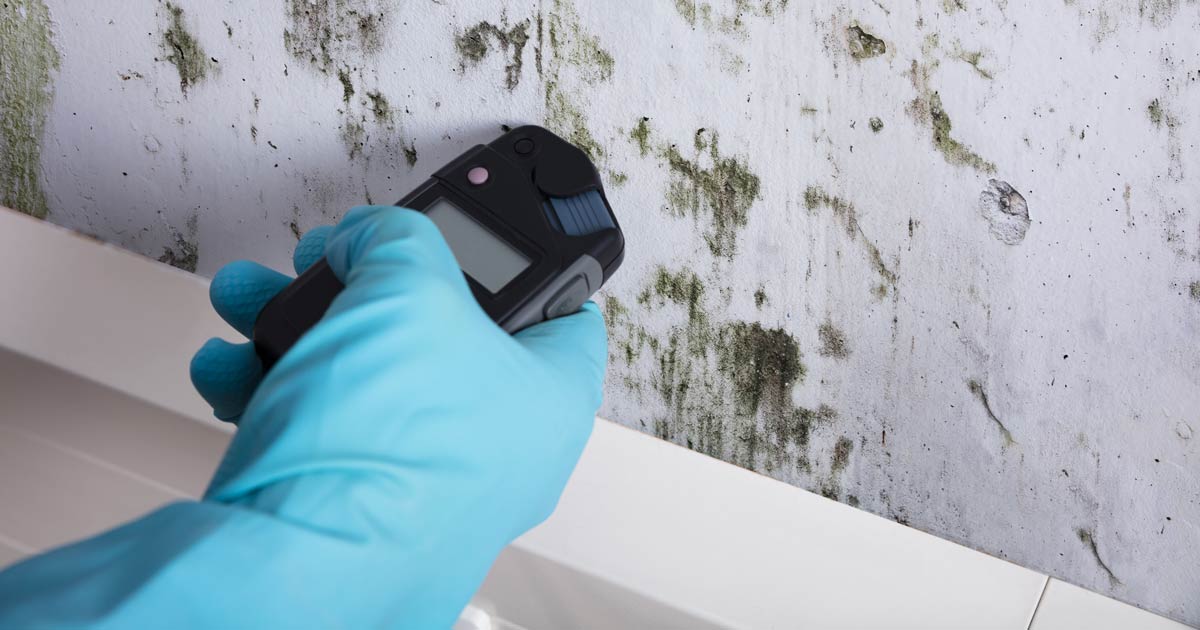Testing Air Quality After Mold Remediation
Testing Air Quality After Mold Remediation
Blog Article
Specialist Tips for Article Mold Removal Success
In the realm of mold removal, effectively removing mold and mildew is only half the fight; the true difficulty lies in avoiding its reappearance. By sticking to expert tips and ideal methods, individuals can safeguard their rooms against mold and mildew rebirth and keep a healthy and balanced interior environment.
Display Moisture Levels On A Regular Basis
After completing mold and mildew remediation procedures, maintaining ideal moisture degrees is vital to avoid mold and mildew re-growth and make certain a healthy interior environment. High humidity levels over 60% create a conducive atmosphere for mold to grow, making routine checking an aggressive measure to avoid any future mold problems.
Furthermore, developing a routine timetable for humidity checks, specifically in risky areas such as kitchen areas, cellars, and shower rooms, is a proactive approach to mold and mildew prevention. By consistently keeping track of moisture levels, property proprietors can successfully mitigate the danger of mold and mildew reoccurrence and keep a healthy and balanced indoor atmosphere post-remediation.
Conduct Thorough Inspections Post-Remediation
Following the completion of mold and mildew remediation procedures, it is important to perform comprehensive examinations to validate the effectiveness of the removal procedure. These post-remediation inspections are important in guaranteeing that the mold and mildew concern has been efficiently dealt with and that there is no reoccurrence or continuing to be mold and mildew development. Inspections should be executed by certified specialists that have knowledge in determining mold and mildew and assessing indoor air high quality.
During these evaluations, numerous approaches such as aesthetic analyses, air tasting, and surface area tasting might be used to extensively assess the remediated areas. Visual assessments include a thorough evaluation of the properties to look for any kind of noticeable signs of mold growth or water damage. Air tasting assists in establishing the air-borne mold spore degrees, while surface area tasting can detect mold and mildew bits on surfaces.
Implement Proper Air Flow Techniques
After ensuring the effectiveness of the mold removal process through thorough assessments, the following critical action is to concentrate on executing proper air flow methods. Appropriate ventilation is vital in protecting against mold reoccurrence by controlling moisture levels and promoting air flow.
Proper air flow not only aids in stopping mold and mildew growth but also adds to the total health and comfort of residents. By guaranteeing sufficient ventilation throughout the residential property, you can lower the danger of mold and mildew regrowth and create a healthier living setting. Routine upkeep of ventilation systems, consisting of cleansing and filter replacements, is vital to sustaining efficient ventilation. Consulting with cooling and heating specialists can provide additional understandings into optimizing air flow strategies for your specific building needs.

Usage Mold-Resistant Materials for Repair Works
To boost the long-term efficiency of mold remediation initiatives, integrating mold-resistant products for repair services is essential in reducing the threat of future mold growth. Mold-resistant products are my company created to hold up against dampness and inhibit mold growth, making them a crucial option for areas prone to moisture and humidity. When fixing locations affected by mold, using materials such as mold-resistant drywall, mold-resistant paints, and mold-resistant caulking can help stop mold and mildew recurrence.
Mold-resistant drywall is a superb alternative to conventional drywall in locations like cellars and shower rooms where dampness degrees are greater. This kind of drywall has a special coating that withstands mold and mildew growth also when subjected to damp conditions. In addition, using mold-resistant paints having antimicrobial representatives can further hinder mold growth on walls and ceilings.
In locations where dampness is usual, such get more as shower rooms and kitchen areas, making use of mold-resistant caulking around home windows, tubs, and sinks can aid seal out water and stop mold from holding in fractures and gaps. By purchasing these mold-resistant products throughout fixings post-remediation, you can considerably decrease the likelihood of future mold concerns and maintain a much healthier interior setting.
Maintain Cleanliness and Address Water Issues
After mold and mildew removal, it is important to keep a clean environment to prevent the regrowth of mold. Leaks, water invasion, or high humidity degrees can create the ideal reproduction ground for mold and mildew, so it is crucial to take care of any kind of water-related troubles quickly.
To keep sanitation, take into consideration using HEPA filters in vacuum cleaners and air cleansers to catch mold and mildew spores and prevent their circulation in the air. Moreover, ensuring proper ventilation in areas susceptible to moisture build-up, such as washrooms and kitchens, can help keep moisture levels in check. By staying vigilant about sanitation and try this website resolving water concerns immediately, you can successfully stop mold reinfestation and maintain a healthy and balanced interior atmosphere.
Conclusion

In the realm of mold remediation, efficiently eradicating mold is just half the battle; the true difficulty exists in preventing its reappearance. After finishing mold and mildew removal treatments, keeping optimal humidity levels is important to prevent mold re-growth and guarantee a healthy indoor atmosphere. High moisture degrees above 60% produce a conducive atmosphere for mold to grow, making normal keeping track of a positive procedure to stop any kind of future mold concerns.
To boost the lasting efficiency of mold removal initiatives, including mold-resistant products for fixings is crucial in mitigating the risk of future mold and mildew development. After mold and mildew removal, it is important to preserve a clean environment to prevent the regrowth of mold and mildew.
Report this page